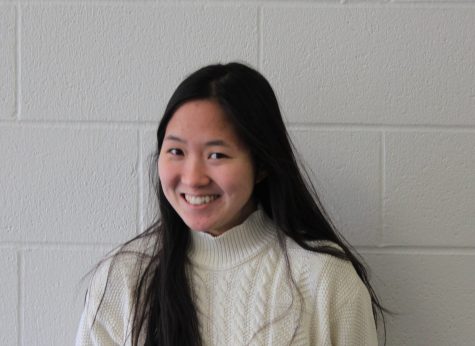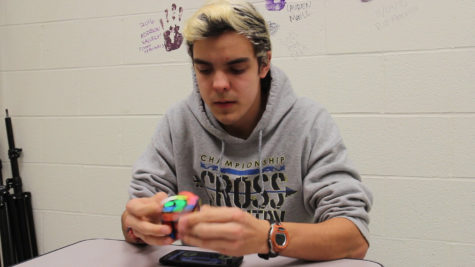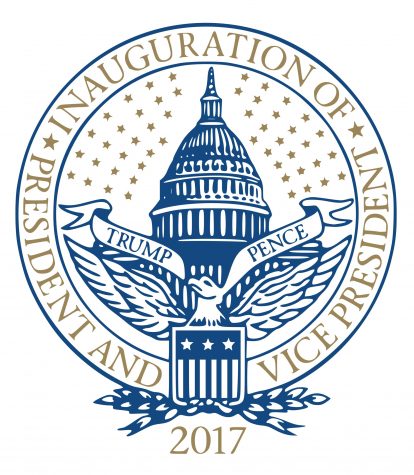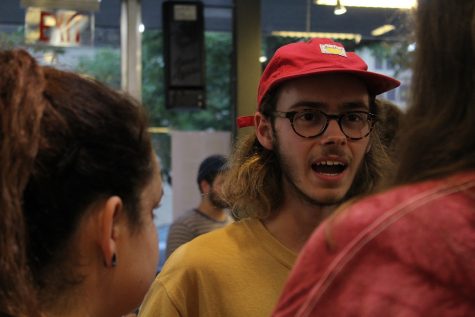Indepth: What is beauty?
Beauty is 35 percent talent, 25 percent private interview, 20 percent evening wear, 15 percent fitness in swimsuit and five percent
on-stage question. At least, that’s what beauty is according to the scoring for the Miss America Preliminary Competitions.
For Arjun Madhavan, senior, beauty is feeling good in your own skin.
For Lina Zhang, junior, beauty is learning to embrace who you are.
For Petiri Munyikwa, sophomore, beauty is whatever makes you feel attractive.
So what does it mean to be beautiful?
Beauty by Definition
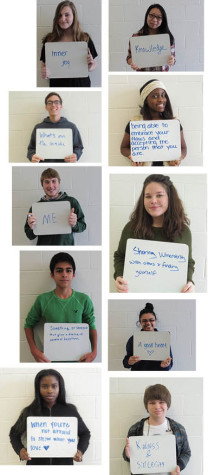
Dr. Rhett Diessner, professor of psychology at Lewis-Clark State College, said engaging with beauty comes in two steps: awareness and emotional arousal. He distinguishes between three types of beauty: natural beauty, artistic beauty and moral beauty.
Natural beauty lies in nature—in the trees, lakes, mountains, and flowers. Dr. Diessner said there is a large amount of research illustrating that when we experience nature, especially the beauty of nature, it causes cognitive restoration, meaning it hits a reset button in the brain. People are able to think more clearly and focus their attention more effectively.
Anything made by a human can be classified as artistic beauty, which is often associated with open mindedness and cognitive creativity.
“We typically think of paintings, architecture and music,” Dr. Diessner said, “but anything made by a human has the potential to be beautiful.”
Moral beauty, also known as inner beauty, is beautiful behavior characterized by human virtues such as love, Dr. Diessner said.
Whenever people engage in moral beauty directly or witness another’s virtues, they experience a prosocial emotion called elevation, which creates in the frontal cortex two action tendencies: the desire to become a better person and the desire to serve others.
Several research studies show people often act on these action tendencies, resulting in increased attempts to better themselves and do good for others, Dr. Diessner said. Other research, including one of Dr. Diessner’s own studies, finds a strong correlation between love and beauty.
“When we love, we notice beauty more,” Dr. Diessner said. “When we notice beauty, we feel more loving.”
He said research has proven those who use their character strengths in new ways and in new places become happier, which then results in an increased likelihood to help others and do good deeds.
“When you notice a virtue in another person, that virtue is being modeled in your own brain,” Dr. Diessner said. “This cannot help but make your mind and brain a more beautiful place.”
Beauty in High School
Hetty Bai, senior, said she felt most beautiful when she was young and didn’t care about appearances.
When she started sixth grade, girls started wearing makeup, fixing their hair a little nicer and caring about clothes, so she started wearing makeup, fixing her hair a little nicer and caring about clothes.
When she started seventh grade, she started to feel self-conscious about her body, and she started noticing a lot of celebrities either being incredibly thin or super voluptuous.
Fighting the pressures to follow beauty ideals, Sadoth Gonzalez said the high school environment can inhibit one’s individuality.
Gonzalez said uniqueness is starting to become more widely accepted, yet high school often can hurt a person’s sense of individuality. However, it is possible to find belonging and a positive sense of self by surrounding oneself with like-minded people.
Over the years, he’s found a group of supportive, open-minded people who allow him to experiment with who he is.
“Supportive and positive people are the beautiful ones who can actually help you feel beautiful in return,” Gonzalez said.
For Jessie Emert, senior, being beautiful is all about honesty.
“Everyone wants something different from you, so you ultimately have to form your own idea of beauty,” Emert said. “Just because you define somebody else as beautiful, it doesn’t mean you aren’t.”
Emert said it’s important for one to define beauty because the high school environment fosters an immense pressure to fulfill feminine expectations.
“I feel it every day,” she said. “People want to see the long hair, the makeup, the cute clothes. People expect different things from you, so you have to be comfortable in who you are.”
Although she senses these expectations, Emert said MHS has a fairly tolerant community.
“People at Marquette tend to leave each other alone,” Emert said. “It’d be nice if people were more encouraging and supportive, but the fact that they let people be is good.”
Beauty by Gender
Petiri Munyikwa, sophomore, said he felt most beautiful shortly after he came out as a transgender male when he attended a dance at his former school, Visitation Academy, clad in a jumpsuit and Timberlands.
He was having fun. His friends were having fun. People kept approaching him with compliments on his dancing.
“Something about it, about being around all those people and being truly and honestly me, was so beautiful,” Munyikwa said.
Munyikwa said he hasn’t started taking hormones, so he lives androgynously. He finds beauty in fluidity of fashion and the fluidity of gender.
“Guys should know that they can take inspiration from feminine influences and still be really beautiful,” Munyikwa said. “Masculinity is the most fragile thing, and the only thing that can really reinforce it is femininity.”
Munyikwa said a lot of people feel uncomfortable with guys wearing traditionally feminine clothing. They want boys to wear pants and girls to wear skirts, but it shouldn’t matter who wears what.
“Clothes have no gender,” Munyikwa said. “Beauty has no gender. Beauty is fluid.”
Lina Zhang, junior, said gender roles shape people’s definition of beauty. From a young age, people are taught that girls are supposed to wear makeup and dress nicely, and boys are supposed to be tough and manly. People’s perception of beauty develops according to these standards.
As a result, everyone starts to compare themselves and others to that limited example of beauty, she said. In order to try to fulfill this conceptualized standard of beauty, people often limit themselves.
“Gender roles set a restrictive definition of beauty,” Zhang said. “People are afraid to venture out and try new things.”
Beauty in the Media
The media sets the standards for physical beauty, Arjun Madhavan, senior, said. In middle and high school, people start to try to live up to these standards, and teenagers are especially susceptible to the media’s influence.
Teens are the worst when it comes to judging body image, he said. Many people are so quick to judge others solely based on their outward appearance.
“Teenagers are over-sexualized,” Madhavan said. “Girls need to have big boobs and big butts; guys need to have perfectly defined abs, big arms and a perfectly defined jaw.”
Samantha Bayne, senior, said the media can harmfully portray societal definitions of beauty.
“Every year, People magazine has those issues called ‘Most Beautiful Women,’ or, ‘Sexiest Man Alive,’ and I realized that the focus was solely on their appearance, rather than on those people as human beings,” Bayne said. “I’ve learned that there’s more to beauty than just looking pretty and having the correct body type.”
As a preteen, Bayne said she often compared herself to the beauty standards of celebrities when she was younger. She has curly hair, which was always an area of insecurity because straight hair is what the media portrayed as beautiful.
Beyond the expectations of Hollywood, Bayne said she is most impacted by the content she absorbs on social media, such as Twitter and Instagram.
“The focus on likes and followers has made me almost shallow,” Bayne said. “No one reaches the expectations we all put on each other and that’s what’s so crazy about media.”
Beauty Within
Deciding to look within at a young age, Felicia Durst, PE teacher, said being beautiful is a matter of self-confidence and kindness.
“When I grew up, I was one of those kids who was always made fun of,” Durst said. “I had glasses, I had braces, and kids were always poking fun at me, calling me ‘chipmunk’ and ‘four-eyes’.”
She said she found confidence through athleticism and sports. Her moments of success in sports helped her feel good about herself, no matter what others said about her or how she looked outwardly.
“I had a good friend who told me that beauty isn’t on the outside, it’s what’s between your ears,” Durst said.
Durst said she feels most beautiful after a good workout and maintains her self-confidence by taking care of her body.
“I make sure to stay healthy, eat right and workout,” Durst said. “It makes me feel good about myself because it makes me a better person and gives me a feeling of accomplishment.”
In order to build a stronger sense of confidence, Durst said finding her passion for teaching and athletics also makes her feel beautiful.
“Find something that you love that can help you gain self-confidence,” Durst said. “Whether it’s drawing, painting, playing a sport, or playing a musical instrument, find something that you can be proud of and do it as much as you can.”
Your donation will support the student journalists of Marquette High School. Your contribution will allow us to purchase equipment and cover our annual website hosting costs. You may become a PATRON by making a donation at one of these levels: White/$30, Green/$50, Blue/$100. Patron names will be published in the print newsmagazine, on the website and once per quarter on our social media accounts.
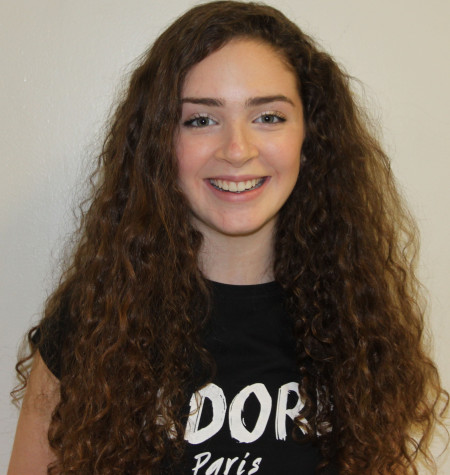
Abigail Gawart, senior, is the multimedia editor for the Messenger and has been a part of the staff since her sophomore year. She enjoys performing for...




